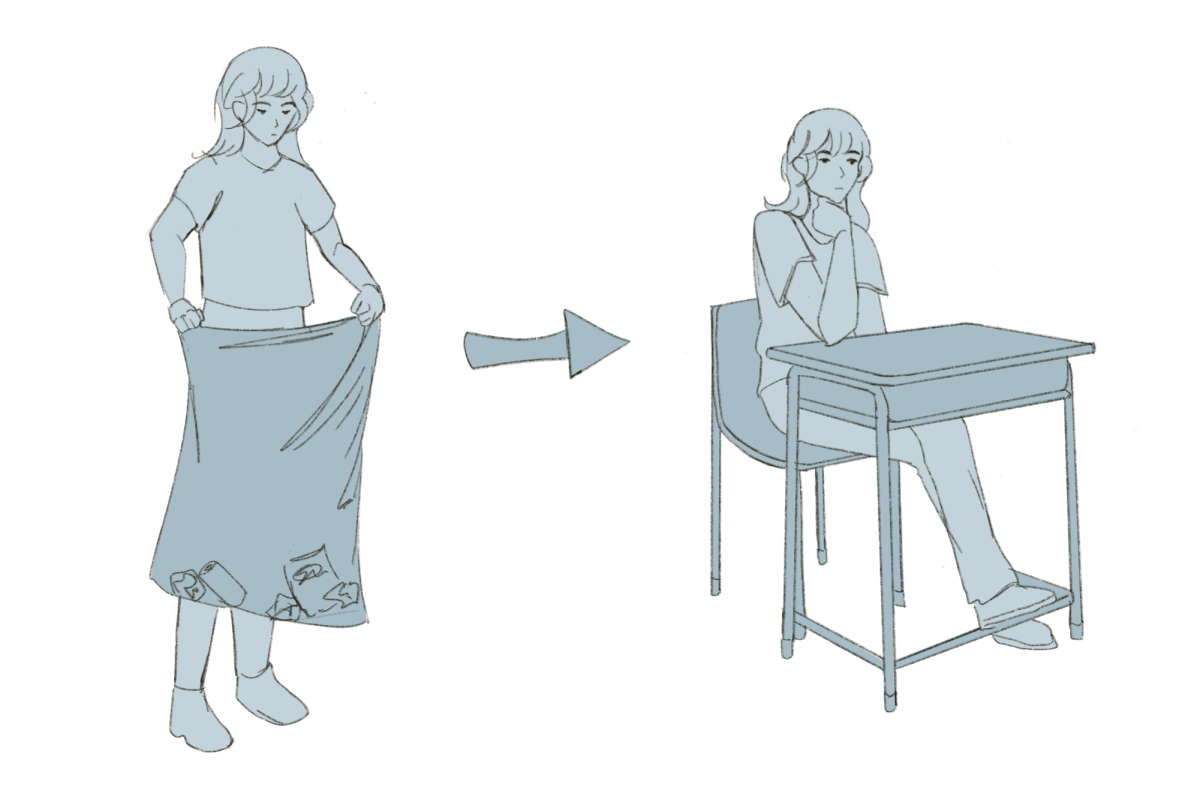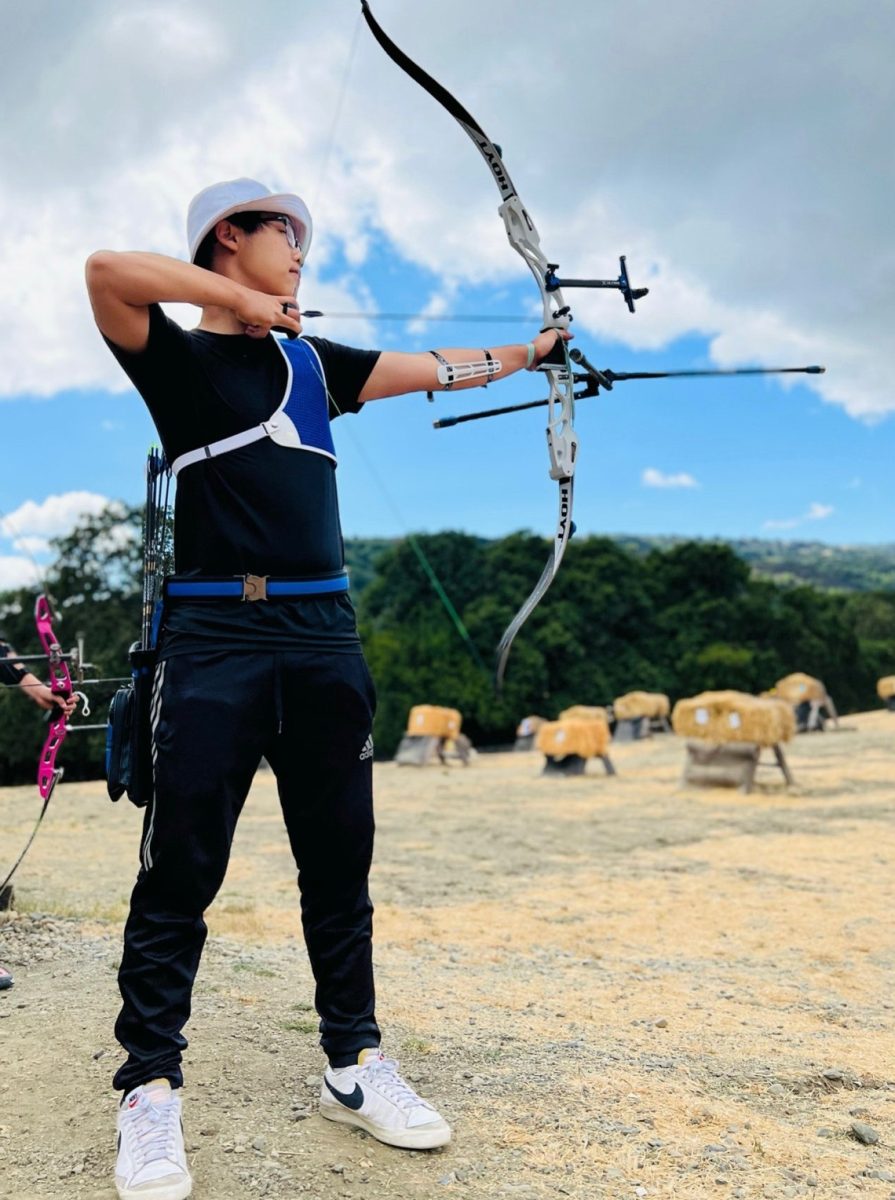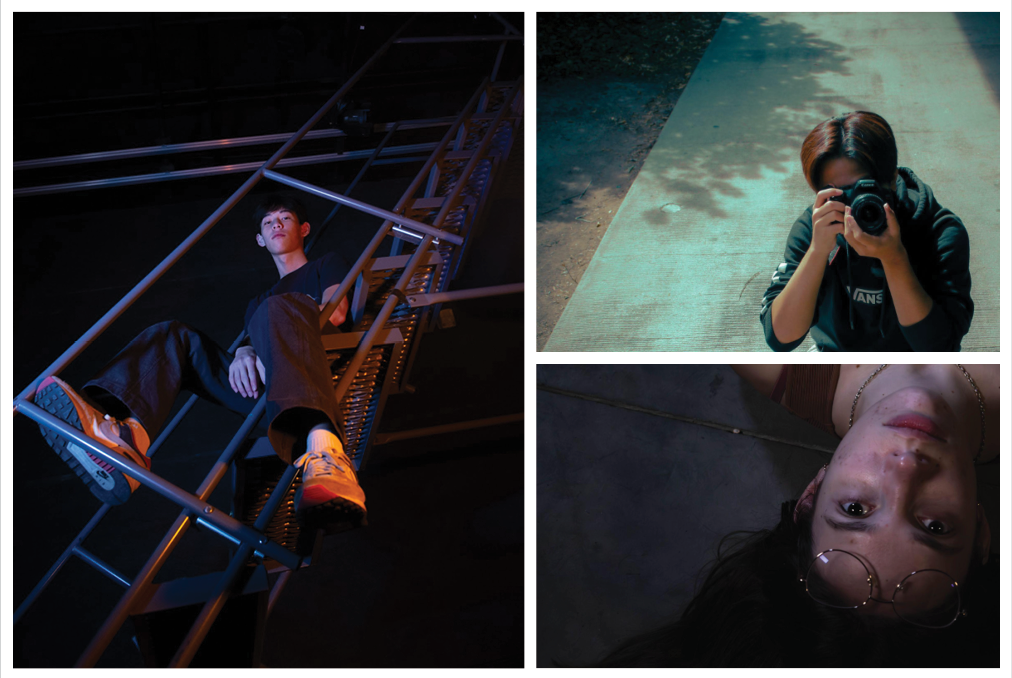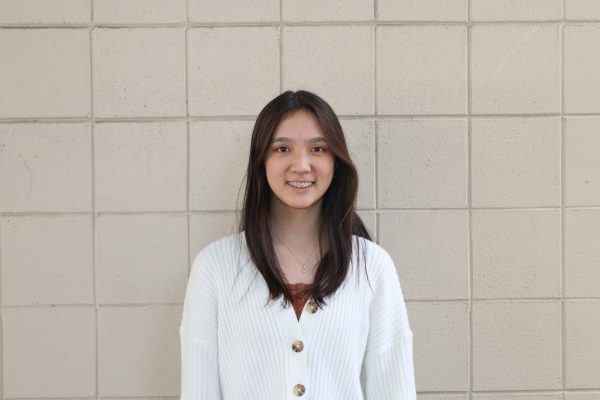During a recent third-period Digital Photography class, senior Samuel Kau raised his Canon R7 to the tall redwood trees in the quad and positioned it vertically to capture their full height. He carefully snapped a few photos by adjusting the ISO control to match the bright sun. Around him stood several other Digital Photography students, who had also ventured to the back of campus alongside Kau to study the landscape and frame their creative shots.
The freedom to go on outings like this is a typical daily experience for students in Digital Photography — a visual arts elective with one class period taught by first-year media teacher Carla Villela. She teaches students how to effectively use a camera, frame photos and edit them. Each of the 29 students is provided with a Canon T6 with a 15-18mm zoom lens, although bringing personal cameras is also allowed.
Throughout the year, students learn how to use different camera controls like aperture, shutter speed or ISO — the exposure trifecta — to optimize a camera’s performance. These controls, among others, help the students control the amount of light, focus and clarity in their photography. In addition, the class covers other fundamental photography skills like personal design, color theory, sequential imaging, photo framing and more to expand students’ photographic arsenal of skills.
“I’m always taking photos because there are a lot of different assignments,” sophomore Blue Chankhunthod said. “It’s really fun because you get to experiment with different lighting and props.”
In a typical class period, Villela briefly explains a concept students will be exploring on their own later in the period, like the rule of thirds or the effects of using different apertures. After checking everyone’s camera is charged and ready to take photos, she assigns them a task to accomplish and lets them roam around campus for around 30 minutes to see what they can bring back.
“After we are taught specific skills in class, we go around campus looking for what we just learned and practice taking photos with it,” Kau said. “In a way, it makes us more aware of what’s around us. It keeps our eyes peeled looking for things.”
The next class after the photo-taking assignment, students usually do a “daily” — or a professional critique — where every student will show their work and other students critique it based on their knowledge of the elements of that particular design.
Villela said she deliberately orders the classes in this “cyclical” format, where students learn a new concept, practice applying it and then reflect on what they learned. She finds that this structure helps students learn in a way where they can compare skills to concepts they’ve learned prior and build upon them.
After students carefully frame and take photos, the last step to complete the photography process is editing. In the class, students learn to use Adobe Lightroom and Photoshop to add highlights, bring out deep, saturated colors and add their style to the photos. Villela also covers techniques like batch editing (editing large numbers of photos at the same time) and compositing (combining photos to make a new image).
“Ms. Villela usually has an example photo, a photo that she took herself, that she shows on the projector,” Kau said. “She uses it as an example to show us how different controls affect the image. Editing is sort of like art, and it gives each person’s photo their style and shows their artistic take on the picture.”
Throughout the year, students also complete various projects like creating artistic self-portraits or taking 1,000 pictures of a real-life event. Through the real-life event assignment, Villela hopes that students will have the opportunity to practice their newfound photography skills during an event — whether it be a play, a wedding or a gender reveal — that is meaningful to them.
“I love digital photography because it’s like a gateway elective for budding artists,” Villela said. “Sometimes art classes can feel pretty daunting to students who don’t have any art experience. But photography is a great way to still learn about art principles, but be able to make visual masterpieces with a tool.”






























